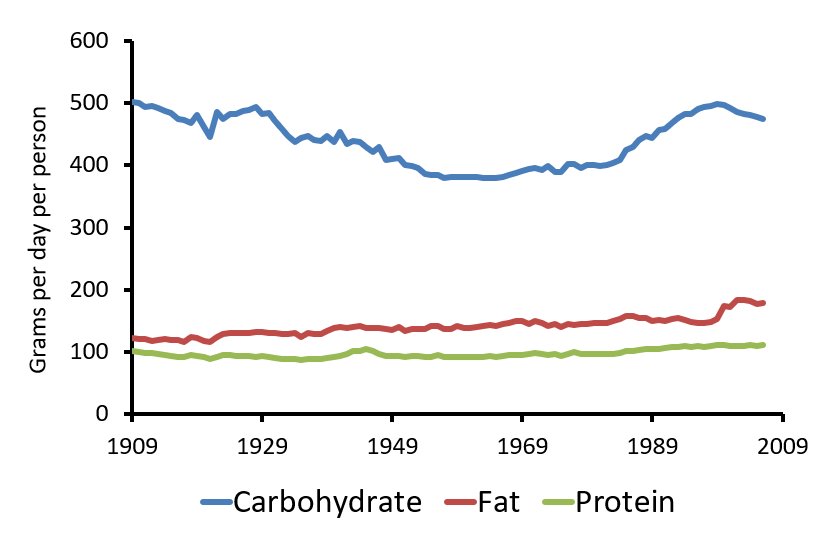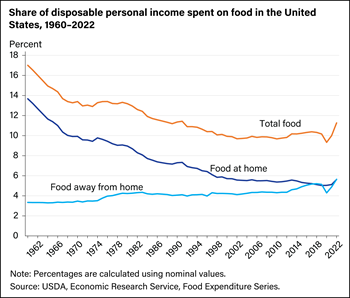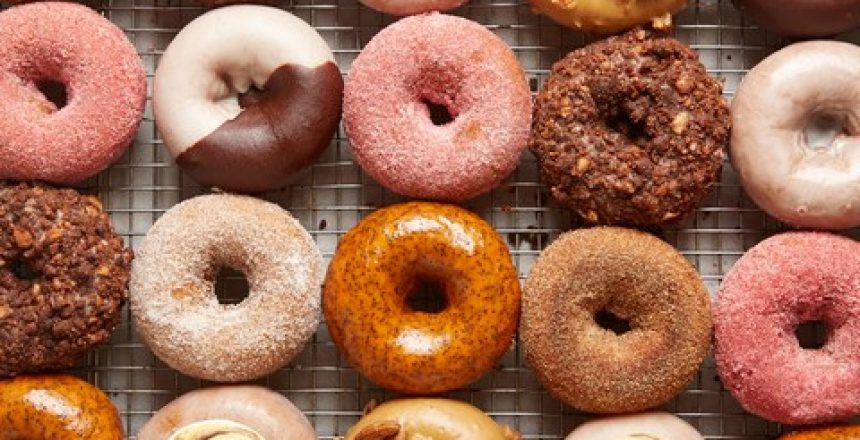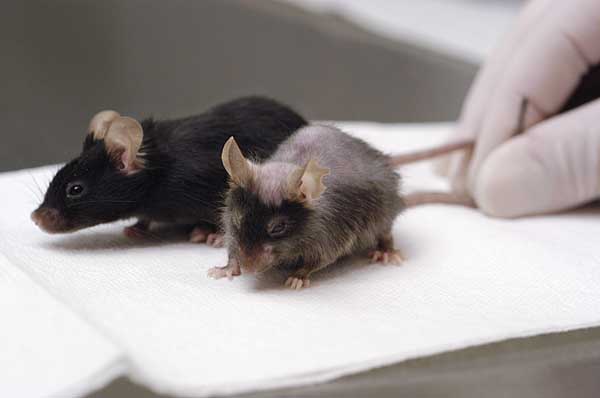Are processed food and obesity linked? There are many reasons to think so, but some may be more subtle than we think.
Processed food: what it is
First of all, processed food must be distinguished from unprocessed, or “normal” food. The scientific literature normally designates what we normally call processed food as “ultra-processed”, since almost all foods must be processed in some way, whether by cutting, cooking, preserving, or packaging.
Ultra-processing is “a type of process that has become increasingly dominant, at first in high‐income countries, and now in middle‐income countries, creates attractive, hyper‐palatable, cheap, ready‐to‐consume food products that are characteristically energy‐dense, fatty, sugary or salty and generally obesogenic.”
Another paper defines it as “nutrient-deficient foods in the form of refined white flour, added sugars, vegetable oils, and artificially created trans fats.”
Processed foods are things like donuts, cookies, french fries, soda pop, pastries, candy, protein bars, and almost all fast food.
Unprocessed food means meat, eggs, fish, fruit, vegetables, nuts, dairy products.
Processed food and the rise of obesity
The obesity epidemic in the U.S. began in the mid-1970s, and increased consumption of processed foods accompanied it. Graph below gives an example of the increase in processed food consumption in one country, Canada, and the decrease in unprocessed food.

There’s no doubt that sugar, refined carbohydrates (at least in excess), and vegetable oils are bad for health and weight control but there may be other and more important reasons for why processed food causes obesity.
Carbohydrates
The inspiration for this article came from the following chart, posted by Stephan Guyenet on Twitter. It shows Americans’ consumption of carbohydrates, protein, and fat from 1909 to 2009, using USDA data.

As can be seen, Americans ate as much carbohydrate in 1909 as they do today, yet there was no obesity epidemic then. Most low-carb advocates (including me) point the finger at carbs for causing obesity. Can that be reconciled with this graph?
Fry cakes and ranch hands
Consider a traditional food eaten by many, especially lower income, people: fry cakes or fry bread.

The recipe for fry bread contains flour, baking soda, salt, and vegetable oil. In the old days, they would have used lard in place of vegetable oil. Fry cakes are the same, but with sugar added, basically unleavened, plain donuts.
Note, I’m not saying these won’t make you fat. They will. Not saying that they’re healthy, because they’re not. But lots of people used to eat this ultra-processed food, and there wasn’t an obesity epidemic.
Here’s what’s billed as a ranch hands’ breakfast:

Who knows how much or often actual ranch hands ate this, but there weren’t too many fat ranch hands.
Exercise
Ranch hands worked out on the range all day, factory and construction workers hauled around heavy stuff all day, housewives didn’t have labor-saving devices, and people walked to work or to the store. No one belonged to a gym. They might have played baseball or football as exercise.
Whether we have lower physical activity than them is an open question. One study found that modern Westerners expend the same amount of energy as hunter-gatherers. I’ve cited that study before, but I have my doubts.
However, even on Wall Street, where they sat in offices, they weren’t fat.

Cost and frequency of processed food
Here we come to the crux of the matter (as far as this article is concerned).
The cost of food has gone way down. People used to spend a significantly higher fraction of their income on food. Restaurants were an infrequent luxury. The following graph shows food expenses starting in 1960.

Poorer countries – and the U.S. used to be much poorer than today – spend a much greater fraction of their incomes on food.

We now have constant, 24/7 food availability, one reason being because it’s cheap and convenient. The idea that you can go more than a few hours without eating is foreign to most Americans. They refer to fasting as “starvation”. They actually believe that “grazing”, which basically means eating all the time, is healthy.
Foods that are made of sugar, flour, and vegetable oil also don’t repress hunger as much as high-protein, whole foods, so people get hungrier more often and can’t resist eating. Processed foods may also override hunger; they’re a supernormal stimulus.
What’s the answer?
I don’t think I’ll be ending the obesity epidemic any time soon, but I could possibly offer some advice to the individual who wants to lose fat or maintain leanness.
1: Avoid processed food. This rule comes with a caveat: if you’re lean, and you expend as much energy as a ranch hand, and you only eat 3 meals a day with no snacks, you might be able to get away with eating processed food. It’s still not healthy, but if you satisfy those conditions, maybe it won’t make you fat.
2: Don’t eat all the time. The time between dinner and breakfast, perhaps 12 hours, was made for digesting and sleeping, not more eating. If you want to lose weight and/or get healthier, go longer without food by doing intermittent fasting.
3: Eat, whole unprocessed foods. If it comes in a box or bag, don’t eat it.
4: Don’t go near fast-food restaurants, or almost any other restaurant for that matter.
I still believe that cutting carbohydrates and eating whole, unprocessed food is the best way to a lean physique for most people, but the considerations outlined above show that the causes of obesity may be more complicated than simply eating too many carbs.















20 Comments
There are some whole, unprocessed foods that are relatively high in carbs (for example, tubers and root vegetables such as potatoes, beets, carrots, etc). I eat quite a few of those types of veggies, and my weight has not changed in a long time. My health is good also. So I think carbs per se are not the problem, but ultra-processed carbs (especially flour and everything made from flour and sugar). The big increase in consumption of ultra-processed junk foods (and I would include all industrial seed oils like veg. oil, canola oil, corn oil, etc) are what is really destroying our health, in my view. But many people are hopelessly hooked on consuming that junk, so I don’t expect the obesity epidemic (and related health problems like diabetes) to get any better anytime soon.
I don’t disagree with what you’re saying, but I would also question whether that graph posted by Stephen G is even remotely close to correct, and even if it is on average, whether that applies evenly to subgroups. I strongly suspect it’s fairly far off. I believe I saw a graph from the UK (from Sam Feltham perhaps) which shows that fat dropped and carbs took off right around 1980, which is likely a decent proxy for the US and which sounds a lot more plausible. My mother was very health conscious and I remember her effectively switching from fat to carbs in the late 70s since that what was supposedly health at the time, which is right when the latest rise in the obesity epidemic took off. It would be interesting to know, if carb consumption is actually the same, what carbs were consumed 100 years ago that were removed to make room for all the carb-centric foods we have now. I believe Gary Taubes has shown that Type 2 Diabetes was quite rare before about 1920 and then took off after the introduction of new forms of sugar (sugar beets? I don’t remember exactly) which supports what you’re saying but also reinforces the role of carbs in the equation.
The graph is allegedly (and I have to trust him on that) from USDA data. If you notice, carbs dropped throught the century, and then picked up again maybe around 1980, so I don’t think it necessarily contradicts what you’re saying. In any case, I’m not wedded to the idea that carbs are not responsible by any means, but I think the extent to which the low-carb crowd (Taubes for instance) harps on it may be simplistic. Vegetable oils seem to be uniquely bad and probably bear a lot of responsibility for the heart disease epidemic of the 20th century, and perhaps for obesity. No doubt out use of veg oils increased radically over the past few decades. Anyway, more detailed research on my part would be needed, but I think it’s pretty clear that Americans of a century ago were not health-food nuts, and ate plenty of bread and sugar – also more meat than now for sure, and a lower protein intake could be partly responsible for obesity.
PS: On rereading your comment, I agree that we would need to affirm the graph and data on carbs that I posted.
Carbs are not one big homogenous substance. Taubes and the rest of us in the alt-hyp community aren’t harping on carbs but * sugar * in the context of adequate caloric intake.
I’m uploading a YouTube video about exactly this as we speak.
In fact D, once I have a few thousand subscribers I would be thrilled to interview you if you’ll let me.
As far as exercise goes in the broader context of activity or TDEE, we might have the same energy expenditure on average but we don’t exercise or expend it at the varying intensities that we once did and definitely not the way paleolithic man did. That is, you can have expenditure matched amounts of activity at radically different intensities that have radically different metabolic effects.
Regards,
Daniel
And the proportion of calories in the diet (in the context of adequate intake that we’ve been in the last 100 years) from sugar drinks and refined carbs has went up drastically. I think we should be wary of trusting the USDA data. I’ll look through my studies when I get home for the relevant stuff.
OK, thanks, Daniel. It’s entirely possible that the USDA data can’t be trusted. Definitely we’re consuming more sugar, but I wonder, didn’t people in 1909 eat a whole lot of bread?
It’s possible. The question would be what kind of bread though. I mean it’s practicality bird seed cake but that Ezekiel bread is actually quite low on GI/GL.
And was energy “throughput” higher due to more physical labor? The big one in my mind (which you pointed out) is snacking which I really doubt figured prominently in the 1909 diet.
Right. I should have emphasized that food prep and cooking was more laborious then and people sat down to meals. No frig from which to get a snack. “Eat your dinner because there won’t be anything until breakfast.”
Hi PD. I have 4 of your books on my Kindle; good reads, and re-reads. I would insert one thing in your discussion… Omega-6. My Grand-Daddy was a tough old man. He survived the depression, was a lumber jack, dug ditches, picked cotton, & built houses well into his 60s. He would eat eggs, bacon, biscuits and gravy (from lard), biscuits with honey & jelly, and coffee for breakfast every morning. And he wasn’t fat. Two things I would say about him: he worked hard all the time; and the food he ate wasn’t high in omega-6 or pesticides. The BIG change to our society is feeding our cattle, chickens, and hogs grain (increasing their omega-6 and lowering their omega-3). The added inflammatory assault came with pesticides, antibiotics, hormones, and flouride in the food. And finally we cooked the food in omega-6 oils. What did Grand-Daddy of? He made the mistake of going to a doctor. And through malpractice, died in the hospital.
Lee Turner, RN
Lee, thanks for that comment. I agree that omega-6 is a big problem and indeed may be the key to all of this.
Sorry to hear about your grandfather. No doubt that hospitals can kill.
A lack of snacking isn’t the only difference in how we eat now as far as how calories are distributed throughout the day. That ranch hand has probably been awake and working for an hour or two before he gets to sit down to that breakfast. Same with a farmer. Likewise, lunches tended to be light and later in the day than we eat lunch now. Dinner would be big, but would probably be a full twelve hours after breakfast.
Then you add in changes like the introduction of peanut butter as a protein source, the switch from drinking whole milk to drinking skim (something that was generally fed to pigs, not people), and the aforementioned switch to vegetable oils, and that means a very different world than it used to be dietary-wise. Even if the amount of carbs, fats, and proteins we eat is the same, the types/sources are different.
Carbs need not be obesogenic.
Asians eat a lot of rice, more primitive tribal people eat a lot of tubers etc. (complex carbs) as a main source of calories and still stay slim.
I feel the effect of release speed of simple sugars is an underappreciated, highly critical determinant of obesogenicity:
It is not the same if one drinks down a bottle of sugar water (fruit juice, cola etc.) or eats the equicaloric amount of slow-release carbs (vegetables, beans, carrots and the like).
As far as I know our bodies have no evolved means to deal with being swamped by simple sugars – those have to be stored as fat immediately and mostly (besides a little that may be absorbed by muscles, immediate metabolism activity or maybe stored in the liver as glycogen).
We lack ability to handle such surges of simple sugars because our ancestors never experienced them.
It seems to me that in terms of carbs, the real change in the past decades was the increased uptake of simple or quick-release sugars – sucrose, HFCS and ultra-processed flour (which has the same glycemic index/load as sucrose, because our digestive enzymes are highly effective of breaking down simple starches into glucose).
The change in eating habits in terms of carbs seems to be just that – eating much less slow-release carbs, and eating more (or practically only) immediate-release carbs.
Food consisting of “free flour” (bakery products that are mostly starch that is immediately accessible by digestive enzymes) is practically equally swamping the body with a surge of sugar like drinking the typical sugar solutions.
I think this is very different from more greasy, high-fat floury food items:
Because fat is digested much slower, it forms a “protective shell” around the flour, hindering digestive enzymes to reach it immediately, resulting in a much delayed and slowed release of sugars; it should be more spread out over time, therefore being less obesogenic.
“Fry cakes” as example from the article should result in a much slower carbs release than an equally carb-rich low-fat white bread, for example.
I can not think of a way more quickly flooding the metabolism with simple sugars than watery solutions of simple sugars or directly digestible starches other than an outright intravenous injection.
Very-slow-release carbs, like oats mixed with digestion-slowing fats, or perhaps as example pancakes (which have starch particles isolated from immediate digestion through a coating of fat and protein) avoid the blood sugar spike of simple carbs and quell hunger over a longer time by spreading sugar release out over an extended time.
The change towards eating huge amounts of immediate-absorption simple sugars is, however, not surprising:
Food that rises the blood sugar content more quickly is more satisfying, activates the brain’s reward center more strongly. This is just the way we’re built. As so often, the same behaviour that causes the greatest immediate pleasure/reward is also the most unhealthy over the longer term.
Addendum:
There appear to be people who are addicted to eating raw cornstarch .
Because our digestive enzymes cut starch molecules into glucose in a very short time,
eating starch causes a very reward-center activating quick and strong rise in blood glucose level,
while avoiding a possible disgust reaction from being overwhelmed with sweet taste.
https://www.youtube.com/results?search_query=eating+starch
Yes, I think your assessment is on the mark, Montgomery. There is no faster way to put on weight than to drink sugary beverages (including fruit juice, by the way). When I was a kid, it was a very occasional treat to get a 7 oz. bottle of coke. Nowadays, many people drink several 12-oz. sodas PER DAY. And for breakfast, it’s not uncommon for many people to drink fruit juice with their non-fat yogurt (loaded with sugar). And then maybe a doughnut or a few cookies later in the morning at work with coffee.
The bulk of the calories these people are consuming are immediate-absorption simple sugars – it is no wonder they become obese. This is a huge difference from the way folks ate back in 1909.
I would included in the definition of “processed food” any otherwise natural food that has been “defatted” such as “low-fat” or “non-fat” dairy, “Egg whites” and any “low-fat” anything that is not naturally low fat.
An overlooked contributory factor which may explain why, despite high carb consumption, people in the early 20th C were not obese, is that they slept more. Matthew Walker has a graph in his book Why We Sleep (pg. 177 in the UK edition) showing the rise in obesity since the 1940s mirroring the fall in average sleep time (from 8.5 hours then to 6.5 hours now.) And he presents lots of convincing scientific evidence to explain why the two phenomenon are closely linked. It is a really insightful book for anyone interested in health and longevity.
Have you looked into the effect of human microbiota on this obesity epidemic? The documentary “What’s With Wheat?” enlightened me on the importance of bifidus bacteria in the digestion of wheat, and how this kind of bacteria is fast vanishing from the populace.
I have been taking kefir for about a month now, and I have been behaving badly with my carb consumption during this time. I usually gain quite considerably when I behave this way, but Mangan, I have actually lost some weight.
I’ve been studying obesity now for over 25 years and I can tell you that it’s a very complex problem with no easy answers. First off, studies from the Univ. of Pennsylvania on twins have shown a clear genetic predisposition, perhaps as high as 80 % which is greater than diabetes and hypertension. These complex and varied gene expressions affect a small nucleus in the hypothalamus which is then very good at setting one’s weight and keeping it there. This ability after all, was a matter of survival in our ancestors.
There are certain epigenetic triggers involved here and these may play as great, or even greater role, than both diet and exercise. I now believe that the most important trigger is our societal infatuation with medications, many of which induce enormous weight gains, and these include anti-depressants , anti-psychotics, antihistamines, anticonvulsants, proton pump inhibitors for reflux, mood stabilizers, and migraine prophylactics, among others. The widespread use of medications is unique to modern society, and was quite uncommon prior to the 1960’s, and there is a rather clear timeline correlation with our obesity epidemic.
All of that being said, obviously the modern western diet isn’t helping things any.
Excellent article, P.D. I like that you keep a truly open mind on these things and go where the evidence leads you. I think the low carb movement has been lured too far to an extreme by using too reductionist and simplistic a model to evaluate the effects of carbs. The “all carbs will break down to simple sugars and therefore are no different” viewpoint is exhibit A for this syndrome.
Also the fact that there is apparently huge variation across the human population, and thus a one-size-fits-all approach is detrimental. Going back to your own traditional (pre-20th century, at least) ethnic food traditions is a good approach. Of course with the recent mixing that becomes complicated for some people, but it’s a good place to start.
Personally I’ve settled into a Weston Price approach to things. Emphasis on whole foods (zero industrial seed oils), homemade, raw milk, fermented foods, nose-to-tail, eggs from my chickens, meat from my rabbits, etc. I do eat white bread occasionally, but it’s sourdough that sits for at least 24 hrs. My sweets come almost exclusively from dates, prunes, fresh fruits, and dark chocolate. Other details, but that gives the picture.
Anyway, I think the science has validated that approach, and will continue to do so as we go forward. This also keeps me from chasing all the latest studies – and fads.
Perhaps, it’s not the quantities of sugar intake that increase or decline +/ – that are a consideration, but the KIND of sugar being ingested, as in, High Fructose Corn Syrup changed. Food Manufacturers put it into everything from Ketchup to protein bars to baby formula.
From Wikipedia: ” In 1967, the Clinton Corn Processing Company obtained an exclusive license to a manufacture glucose isomerase derived from Streptomyces bacteria and began shipping an early version of HFCS in February 1967.[3]:140 In 1983, the FDA approved HFCS as Generally Recognized as Safe (GRAS), and that decision was reaffirmed in 1996[25]”
There’s your link. They put a poison in the food supply, told us to cut out fat, the population upped their carbs and grains. Voila. Modern obesity and Type 2 Diabetes infiltrates the population.
The chart’s fine. Sugar intake didn’t increase all that much, but the percentage of “poison” of High Fructose Corn Syrup eaten/ingested went up in lieu of straight sugar.
HFCS chemical make-up of 50% fructose – 50% sucrose and is bad news for the liver. Toxic.